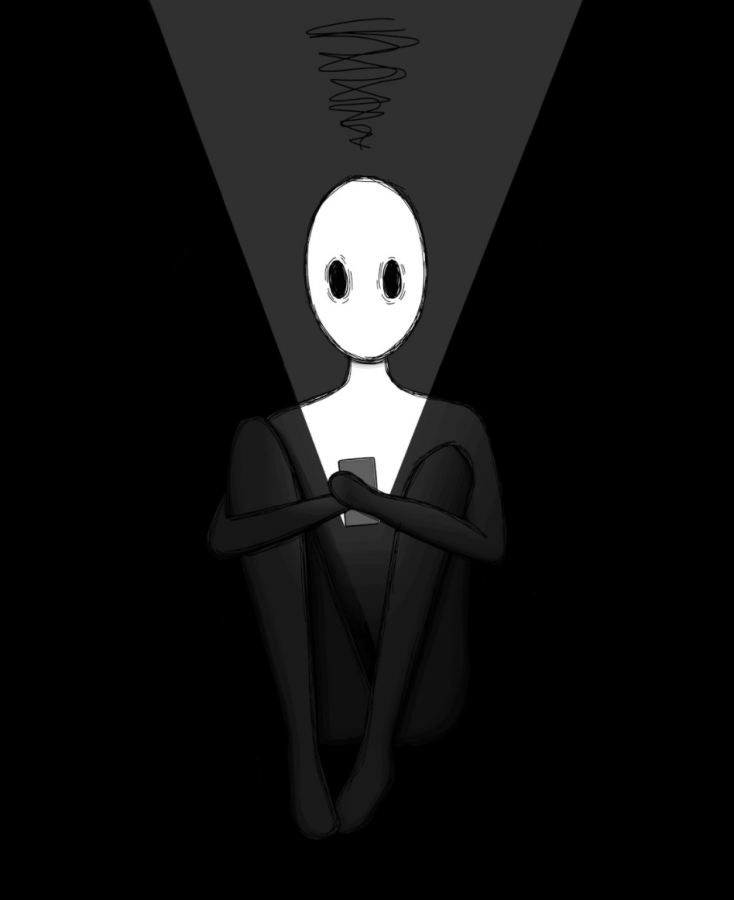Teens Must Avoid the Potential Dangers of Social Media
February 26, 2021
Although social media was originally created for connecting with friends and expanding one’s network, since then, many harmful effects on mental and physical health have arisen.
The formation of unrealistic body types, the toll on one’s mental stability, and minimized attention span are just three examples of the negative impacts from social media use. Indeed, Instagram commonly promotes unrealistic body standards, which in turn has led to a higher number of eating disorders among teenagers than before social media. According to the Lexington Line, 80% of women have said that the image of women on television, in movies, in fashion magazines, and in advertisement makes them feel insecure. On top of this, 42% of the girls first through third grade want to be thinner. Our eyes are constantly being fed images of seemingly flawless women and we begin to believe that those body types are the norm. I have been a victim of falling into the belief that if I do not look like one of the models on my screen then I am not beautiful. Sophomore Sonia Kim has also noticed the dangerous aspects of social media. “I think social media takes a toll on your mental health. Body image has a lot to do with social media and my confidence [is] notably lower.”
A second negative is the decrease in attention span that can be caused from constantly spending time scrolling. Junior Myala Callender adds that “the most negative [e]ffect I’ve had from social media is probably my attention span and the constant distraction. I used to read all the time and having a phone has weirdly made that harder to concentrate on.” In the year 2000, the average attention span of a human was 12 seconds and as of 2020 the average attention span is about 8 seconds. This leaves the average person’s attention span 1 second shorter than that of a goldfish.
Many teenagers’ attitudes towards social media, including my own, are widespread, not isolated. Social media formulates this idea in our heads that we are alone, that “[social media] triggers more sadness, less well-being.” Isolation and the sensation of comparing ourselves with others is correlated to phone and social media addictions. In some cases it can even result in mental illnesses such as anxiety and depression. According to Child Mind Institute, “[T]eenage[d] and young adult users who spend the most time on Instagram, Facebook and other platforms were shown to have a substantially (from 13 to 66 percent) higher rate of reported depression than those who spend the least time.” Addiction can lead to constantly judging yourself or developing unreachable expectations for what your body should look like. This judgement can lead to developing the mental illnesses previously stated. Other hidden traps of social media consist of the infamous fear of missing out, or, “FOMO,” low attention spans, and in some cases, cyberbullying. The only found way to escape this so-called trap is by either deleting social media as a whole or taking a break from it. Callender, who has noticed social media’s harmful effects, explains how she has recently deleted TikTok to try and limit her screen time for a week, especially right when she wakes up and goes to sleep. Social media and the immense power it holds over many teens needs to be deleted in order to avoid the negative consequences.
Amidst a pandemic we have lost a great deal of the social interaction that we previously had. Subsequently phones have become a prime source of communication for some people. Due to this, spending time on social media has become second nature to us and we are less reluctant in wanting to put our phones down. An article published by Keep It Usable states that “A study from Harvard University showed that self-disclosure online fires up part of the brain that also lights up when taking an addictive substance, like cocaine.” One aspect of fueling an addiction is by repeating an action. Some are able to recognize this and can cut it cold turkey, but for others it may take more time. Here is a compiled list of ventures that are stimulating for the body and mind that are better than staring blankly at a screen: starting a new book, playing a sport you enjoy, spending time with friends outside, making jewelry, playing an instrument, catching up on sleep, sewing, trying out a new recipe, or going on runs or walks outside. All in all, while there are alternatives to spending time on social media, it is good to be aware of the negatives that are caused for many so that you do not fall into the trap that it creates.









